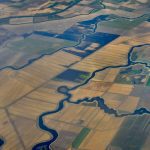- Bureau of Reclamation resumes cold water flows to control smallmouth bass.
- Cooler releases come from deep in Lake Powell through Glen Canyon Dam.
- Flows protect native species like the threatened humpback chub.
- Hydropower impacts are being reduced compared to last year’s effort.
Thursday, August 7, 2025 — The Bureau of Reclamation announced Tuesday a resumption of “cool mix” water releases from Glen Canyon Dam  in northern Arizona, a measure designed to prevent the spread of invasive smallmouth bass in the Colorado River below the dam. These fish, which thrive in warmer water, pose a serious threat to the federally protected humpback chub and other native fish in the Grand Canyon.
in northern Arizona, a measure designed to prevent the spread of invasive smallmouth bass in the Colorado River below the dam. These fish, which thrive in warmer water, pose a serious threat to the federally protected humpback chub and other native fish in the Grand Canyon.
The cold water is released from deeper sections of Lake Powell, accessed through the dam’s river outlet works and hydropower penstocks. These flows do not increase the total amount of water released downstream but are timed to begin when the average river temperature exceeds 60 degrees Fahrenheit for three consecutive days at river mile 30 below the dam. Releases began on August 3, were paused temporarily on August 5, and will resume again when temperatures rise above the threshold.
A Response to Ecological Shifts in the River System.
Declining reservoir levels in Lake Powell have made it easier for smallmouth bass to pass through Glen Canyon Dam and enter stretches of the Colorado River in the Grand Canyon. These nonnative predators spawn in warmer waters and are increasingly appearing downstream, where they threaten the reproductive success of native fish.
The Bureau of Reclamation warns that if smallmouth bass become established in the Grand Canyon, eradication would be extremely difficult and expensive. Last year’s similar operations successfully cooled river temperatures as far as river mile 60, but reduced hydropower production. In 2025, adjustments were made to minimize those losses. The cool water will now only be maintained to river mile 30, and the releases are scheduled to end by October 20.
Collaboration Across Agencies.
The approach is part of a coordinated plan involving multiple federal agencies, including the National Park Service, U.S. Fish and Wildlife Service, and U.S. Geological Survey. These agencies are working together on both immediate and long-term strategies to prevent the spread of nonnative fish below Glen Canyon Dam.
Wayne Pullan, Regional Director for the Bureau’s Upper Colorado Region, stated that last year’s early results were encouraging and helped shape this year’s strategy. “With the recent completion of the 12-mile slough modifications and ongoing operational efforts, we’re building on that momentum to protect all native fish species in the Grand Canyon,” he said.
Balancing Ecology and Energy.
To reduce the impact on hydropower production, the Bureau is closely coordinating with the Western Area Power Administration. Glen Canyon Dam generates revenue used to fund infrastructure maintenance and operations under the Colorado River Storage Project.
Acting Reclamation Commissioner David Palumbo emphasized that this year’s approach balances biological protection with energy efficiency. “This flow alternative strikes a good balance between achieving biological objectives and reducing hydropower impacts,” he said.
For more information about Glen Canyon Dam releases and environmental planning efforts, the Bureau encourages the public to visit this official resource page .
.
Image via Bureau of Reclamation press release : “The cool mix releases will utilize Glen Canyon Dam’s bypass tubes which access a greater depth of water in Lake Powell, creating a colder flow of water downstream to disrupt the establishment of smallmouth bass. File Photo.”
: “The cool mix releases will utilize Glen Canyon Dam’s bypass tubes which access a greater depth of water in Lake Powell, creating a colder flow of water downstream to disrupt the establishment of smallmouth bass. File Photo.”



